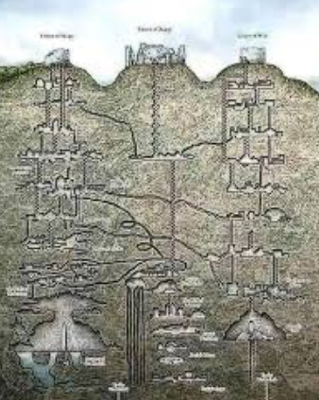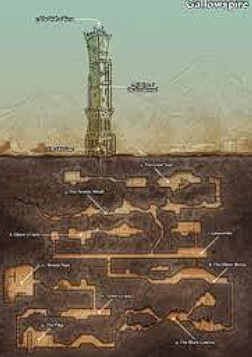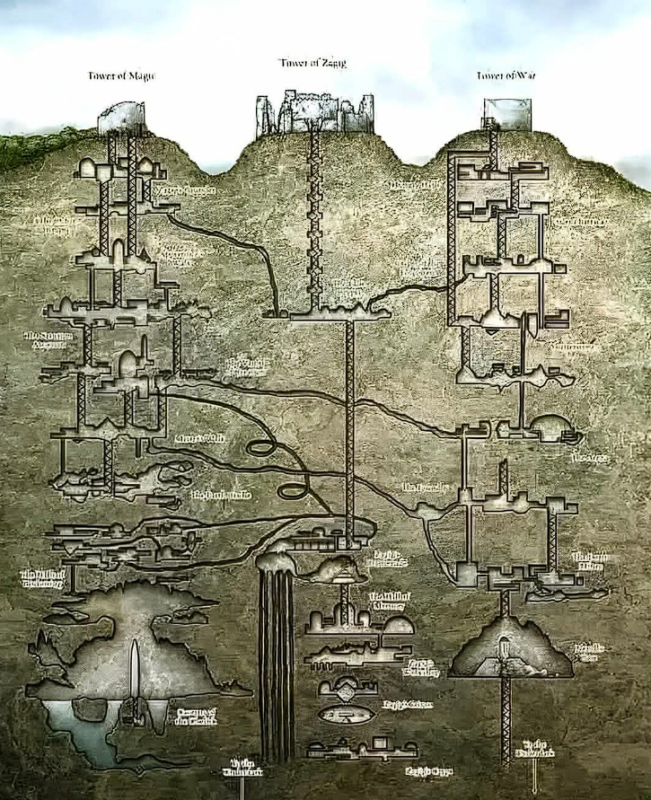Derinkuyu, the largest and deepest underground city in Cappadocia, Turkey, remains one of the most fascinating and mysterious archaeological discoveries. With an estimated depth of 85 meters and spanning 18 levels, this subterranean metropolis could house up to 20,000 people along with their livestock, food supplies, and essential provisions. But who built this complex structure, and why did they construct such an elaborate underground refuge? The answers remain shrouded in mystery, fueling speculation about lost civilizations, ancient disasters, and even extraterrestrial influences.
The Origins of Derinkuyu Underground City
Who Built Derinkuyu?
The origins of Derinkuyu remain a topic of debate among historians and archaeologists. The most widely accepted theory suggests that the Phrygians, an ancient Indo-European civilization, constructed the city around the 8th century BCE. However, some scholars argue that its origins could be much older, possibly dating back to the Hittites (1600–1178 BCE) or an even earlier, unknown civilization.
Evidence suggests that later civilizations, including the Byzantines and early Christians, expanded and modified Derinkuyu, using it as a refuge from invading forces such as the Persians, Arabs, and Mongols.

Why Was Derinkuyu Built?
The primary function of Derinkuyu remains uncertain, but various theories suggest that it served as:
- A defensive shelter during times of war and invasion.
- A refuge from natural disasters such as volcanic eruptions and harsh climate changes.
- A secret place for religious communities seeking protection from persecution, particularly early Christians.
Regardless of its original purpose, Derinkuyu demonstrates advanced engineering and strategic design, allowing thousands of people to live underground for extended periods.
Architectural Marvels of Derinkuyu
A Multi-Level Underground Metropolis
Derinkuyu is a highly sophisticated underground city featuring interconnected tunnels, living quarters, places of worship, food storage areas, and ventilation shafts. The city’s layout includes:
- Residential areas with separate rooms for families.
- Churches and chapels where religious ceremonies were held.
- Storerooms and wineries for preserving food and making wine.
- Schools and meeting halls where education and communal gatherings took place.
- Stables for livestock, ensuring a sustainable food supply.
Advanced Ventilation and Security System
One of the most impressive features of Derinkuyu is its intricate ventilation system. A network of over 50 air shafts ensures that fresh air circulates throughout the city, making it possible for inhabitants to survive underground for long periods.
Additionally, the city was designed with security in mind. Massive stone doors, weighing several hundred kilograms, could be rolled into place to seal off entrances, preventing invaders from entering. These doors could only be opened from the inside, adding an extra layer of protection.
Theories and Mysteries Surrounding Derinkuyu
Connection to Ancient Cataclysms
Some historians believe that Derinkuyu was built as a response to catastrophic events. This theory suggests that the city’s builders may have sought refuge underground to escape:
- Violent invasions by enemy forces.
- Severe climate changes or volcanic eruptions.
- Mythological disasters described in ancient texts.
The idea that Derinkuyu was a survival bunker for ancient civilizations aligns with legends from various cultures, many of which describe great floods, cosmic disasters, or celestial wars.

Was Derinkuyu Linked to the Anunnaki?
Certain researchers have drawn connections between Derinkuyu and ancient Sumerian texts, particularly those referencing the Anunnaki—celestial beings mentioned in Mesopotamian mythology. According to some interpretations, these texts describe a time when “black-haired people” sought shelter underground from an impending catastrophe. Could Derinkuyu be one of these legendary refuges?
While there is no direct evidence linking Derinkuyu to extraterrestrial encounters, the sheer scale and complexity of its construction continue to inspire speculation about lost knowledge and advanced ancient engineering.
Modern-Day Exploration and Tourism
Derinkuyu as a Tourist Attraction
Today, Derinkuyu is one of the most visited archaeological sites in Cappadocia. Tourists can explore its labyrinthine tunnels, ancient living quarters, and hidden chambers, marveling at the ingenuity of its builders. The city offers a glimpse into the past, allowing visitors to imagine life underground centuries ago.
Ongoing Research and Discoveries
Despite extensive studies, Derinkuyu still holds many secrets. Archaeologists continue to explore its depths, uncovering new chambers and artifacts that may provide further insights into its history. Ongoing research may one day answer the lingering questions about its origins and purpose.
Conclusion: A Testament to Human Ingenuity
Derinkuyu Underground City stands as a remarkable testament to the creativity, resilience, and adaptability of ancient civilizations. Whether it was built for protection, religious sanctuary, or survival in the face of catastrophe, its existence challenges conventional historical narratives and invites us to rethink humanity’s past.
As new discoveries emerge, Derinkuyu continues to captivate scholars, adventurers, and mystery enthusiasts alike. Whether you view it as an ancient stronghold, a survival refuge, or a relic of lost knowledge, one thing remains certain—Derinkuyu is one of the greatest archaeological wonders of the ancient world.


CÁC TIN KHÁC
Mary Walton: The Forgotten Inventor Who Helped Clean Up America’s Cities
Tomb of Queen Nefertari in the Valley of the Queens, Egypt
Discover the Hypostyle Hall of the Temple of Hathor at Dendera
Venus de Losange: Unveiling the Mystery of a 20,000-Year-Old Paleolithic Icon